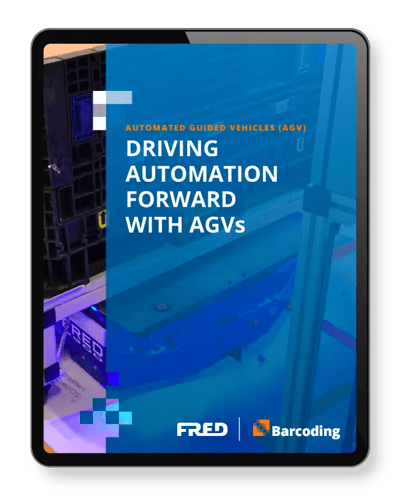Robotics is quickly revolutionizing the manufacturing industry and automating more and more tasks on the factory floor. One of the most common uses for robotics in warehouses is through the use of an automated guided vehicle (AGV).
AGVs follow a pre-determined path from various points around the warehouse, transporting materials from location to location. The use of AGVs in a warehouse is a practical way to automate repetitive tasks freeing up workers for other more complicated tasks. If you are thinking about implementing AGVs in your warehouse, first determine if you have a situation where an AGV would make sense. One primary question to ask is do materials in your warehouse need to be repeatedly shuttled from two or more common locations?
Once a situation where an automated guided vehicle would make sense is identified, the next steps are how to make sure an AGV is implemented safely. At ASI Drives, we perform several key safety steps to ensure the AGV will function properly, workers will feel comfortable, and your manufacturing facility will operate efficiently.
Clearly Identify the Path the AGV Will Take
The path any AGV takes should be clearly identified and shown to the workers in the warehouse. The FRED 2500 follows a clearly outlined and marked path around the warehouse. This outlined path allows workers to clearly identify when they may be getting in the AGV’s way and when to be careful.
The AGV should be visible to nearby workers
Every autonomous vehicle in a warehouse can be an inadvertent threat to workers if it cannot be seen. Every AGV should be clearly visible even when in a dimly lit area. ASI Drives equips all of it’s AGVs with bright blue LEDS in order to clearly outline the shape of the robot so that workers can always see it coming.
If workers don’t see an AGV, they should be able to hear it. Similar to the sound fork lifts emit when they reverse, AGVs should always emit a small sound while they are moving.
Low Maximum Speed of AGVs
While this touches on efficiency, safety is of the utmost importance when implementing AGVs in manufacturing. Capping an AGV at a low max speed (between 2 to 5 mph is ideal) not only increases safety but also helps workers feel safer while working alongside AGVs.
Automatic Object Detection
Every AGV in manufacturing has to have the capability to deal with objects and humans in its path. While there are a number of different ways to achieve this functionality, the use of onboard lasers is often the most implemented system. Using laser sensors, an AGV automatically scans the area in front of it to detect if there is an object or person crossing its path. Upon detecting something in front of it, the AGV should come to a stop.
Capability to Operate Without Wireless Internet
While hotly contested in different use cases, most AGVs should not require wireless internet in order to operate. The addition of wireless internet to an AGV requires that it has a constant Internet connection reducing the overall system robustness.
Workers Have to Be Trained in the Operation of an AGV
This may be the most important step in safely implementing AGVs in your warehouse. Prior to installing the AGVs and after installation, workers should be told of the AGVs, shown how they work, and have the AGV’s full functionality demonstrated to them.
A proper training for warehouse workers about to work with AGVs should include:
- Showing the outlined path that the AGV will take and allowing workers to watch the AGV traverse the path
- Clearly pointing out the lights on the AGV and listening for the beeping noise so workers know how to detect the AGV
- Demonstrating the object avoidance system and how the system will work overall
- Demonstrating how to work around the AGV while it is performing its duties
Safety will always be the top priority when implementing an AGV into your manufacturing warehouse. If implemented correctly though, there is evidence that AGVs actually decrease injury and accident rate in manufacturing warehouses. Many accidents in warehouses can happen because of mistakes, distractions, and sleepiness. Using an autonomous guided vehicle is one of the simplest ways to ensure a repeatable path with a machine that does not get tired or distracted.
Above all, when thinking about using an AGV in your manufacturing process, think about the possible interactions with workers. The steps above are designed to ensure that workers are aware and feel comfortable around the use of AGVs in their work facility. Workers who know how to work with an AGV and workers who are properly trained in their use will help prevent accidents.
At ASI, we are committed to safety which is why we have implemented all of the safety steps above into our process when installing a new AGV system. Our AGV, the FRED 2500, is designed to be safe, easy to work with, and practical for a diverse set of manufacturing scenarios.


